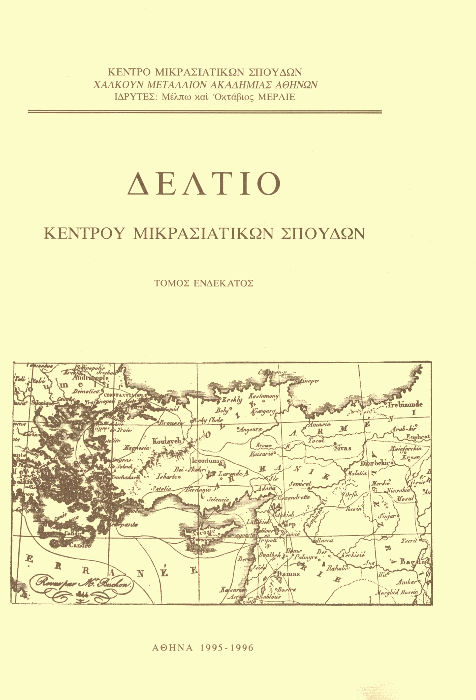Το χρονικό της ανακάλυψης μιας ελληνιστικής πόλης στην Καρία (Bucakkoy, Συνέτα)
Περίληψη
In the winter of 1995, an inscribed stele found near the village of Bucakköy in
Karia was transported to the Aphrodisias Museum. The stele is dedicated to Zeus
Synetenos by a priest and 121 other men (late 3rd or early 2nd cent. B.C.). The
epithet Synetenos belongs to a widespread type of Anatolian divine epithets,
which usually derive from place names. The village of Bucakköy has been known
as the possible site of a smal independent polis ever since the discovery of an
honorific inscription, built into the wall of the village mosque, in 1893. K.
Buresch (1895), J.G.C. Anderson (1897), and Jeanne and Louis Robert (1946)
recorded the presence of an ancient cemetery, a late Roman site, two inscriptions,
and a relief representation of a mother goddess, but were unable to find
evidence for the exact location or the name of the city. In light of the new
epigraphic find C. Ratté, L. Bier, and A. Chaniotis undertook an investigation,
which offered answers to both questions. A fragmentary inscription (3rd/2nd
cent.) was found built in the wall of a house in Bucakköy. It contains the last 9
lines of an honorific decree; in the hortatory formula, where one expects the
name of the community, we find a word beginning with the letters SY, obviously
the ethnic name Synetenoi. This confirms the assumption that the city’s name
was Syneta (cf. other indigenous names, such as Anineta, Azita, etc.). The city
itself was discovered at the hilltop site of Tola§ Tepe, where the dedicatory inscription
was found. This polis, in the eastern end of the Maeander valley and at the
border of Phrygia and Karia, may have been founded by the Seleucids (late 3rd
cent.) or the Attalids (early 2nd cent.). The rich onomastic material indicates that
its population consisted of settlers from the coastal cities of Ionia. It is an
attractive assumption - in the light of the small size of the settlement, the fact that
the dedicatory inscription does not give any information about the identity of the
122 dedicators, and the fact that only a few men seem to have family relations
with one another - that these men were the first settlers.
Λεπτομέρειες άρθρου
- Πώς να δημιουργήσετε Αναφορές
-
Χανιώτης Ά. (1997). Το χρονικό της ανακάλυψης μιας ελληνιστικής πόλης στην Καρία (Bucakkoy, Συνέτα). Δελτίο Κέντρου Μικρασιατικών Σπουδών, 12, 13–29. https://doi.org/10.12681/deltiokms.72
- Τεύχος
- Τόμ. 12 (1997)
- Ενότητα
- Άρθρα

Αυτή η εργασία είναι αδειοδοτημένη υπό το CC Αναφορά Δημιουργού – Μη Εμπορική Χρήση – Παρόμοια Διανομή 4.0.
Οι συγγραφείς των άρθρων που δημοσιεύονται στο Δελτίο διατηρούν τα δικαιώματα πνευματικής ιδιοκτησίας επί των άρθρων τους, δίνοντας στο περιοδικό το δικαίωμα της πρώτης δημοσίευσης. Άρθρα που δημοσιεύονται στο Δελτίο διατίθενται με άδεια Creative Commons 4.0 και σύμφωνα με την άδεια μπορούν να χρησιμοποιούνται ελεύθερα, με αναφορά στο/στη συγγραφέα και στην πρώτη δημοσίευση για μη κερδοσκοπικούς σκοπούς και με δικαίωμα τροποποίησης μόνον με παρόμοια διανομή (αν αναμείξετε, τροποποιήσετε, ή δημιουργήσετε πάνω στο υλικό, πρέπει να διανείμετε τις δικές σας συνεισφορές υπό την ίδια άδεια όπως και το πρωτότυπο).



